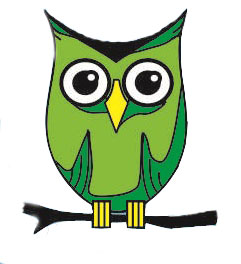Antibactery test of dragon scale leaves (Drymoglossum piloselloides) patientaries on the hamble zone of Propionibacterium acnes
Abstract
Research on the benefits of the starch essence of dragon scale leaves (Drymoglossum piloselloides) against anti-bacterial P.acnes has not yet been conducted. The use of dragon's scales as an anti-bacterial on acne is intended to develop a new type of anti-bacterial that has minimal side effects against Propionibacterium acnes bacteria and to overcome resistance problems arising from the use of antibiotic drugs. This research uses laboratory experimental method with quantitative research type and the design used in the research is Post Test Only Control Group Design. The parameters measured were the antibacterial power of Drymoglossum piloselloides leaf starch juice against Propionibacterium acnes microbiologically by using the disc paper method, then the inhibition zone was measured using a caliper with an accuracy of 0.01 mm. The results of measuring the diameter of the inhibition zone of dragon scale leaf starch juice (Drymoglossum piloselloides) against Propionibacterium acnes inhibition zone, obtained the average diameter of the inhibition zone at a concentration of 40% of 1.26 mm with a weak category, at a concentration of 50% of 1.94 mm with a weak category, at a concentration of 60% of 2.8 mm with a weak category, at a concentration of 70% of 3.36 mm with a weak category, at a concentration of 80% of 3.94 mm with a weak category and in the positive control using Chloramphenicol get an average inhibition zone diameter of 8.36 mm with a moderate category
Keywords
Full Text:
PDFReferences
Sutaria, A. H., Masood, S., Saleh, H. M. & Schlessinger, J. Acne Vulgaris. (StatPearls Publishing LLC.).
Nizar, N., Sarmadi, S. & Pitaloka, R. Pengaruh Suhu dan Lama Penyimpanan Sediaan Krim Anti Jerawat Mengandung Antibiotik Yang Diracik Di Apotek Terhadap Aktivitas Antibakteri Staphylococcus Aureus. JPP (Jurnal Kesehatan Poltekkes Palembang) 13, 80-84 (2018). https://doi.org:https://doi.org/10.36086/jpp.v13i2.230
Jahns, A. C. et al. An increased incidence of Propionibacterium acnes biofilms in acne vulgaris: a case–control study. British journal of dermatology 167, 50-58 (2012).
Amalia, A., Sari, I. & Nursanty, R. Aktivitas antibakteri ekstrak etil asetat daun sembung (Blumea balsamifera (L.) DC.) terhadap pertumbuhan bakteri Methicillin Resistant Staphylococcus aureus (MRSA). Prosiding Seminar Nasional Biotik 5, 387-391 (2017).
Wulandari, Y., Ruhiat, Y. & Nulhakim, L. Pengembangan media video berbasis powtoon pada mata pelajaran IPA di kelas V. Jurnal Pendidikan Sains Indonesia (Indonesian Journal of Science Education) 8, 269-279 (2020).
Natasya, Y. Uji Daya Antibakteri Sari Pati Daun Sirsak (Anonna muricata) Terhadap Zona Hambat Escherichia coli Sebagai Pengembangan Petunjuk Praktikum Berbasis QR Code Bagi Mahasiswa., STKIP PGRI Lubuklinggau, (2021).
Widiya, V. Uji Daya Antibakteri Sari Pati Daun Kumis Kucing (Orthosiphona aristatus) Terhadap Zona Hambat Salmonella thypi dan Diimpelementasikan sebagai Video Pembelajaran Biologi SMA, STKIP PGRI Lubuklinggau, (2021).
Febriani, W. D., Wahyuni, D. & Asyiah, I. N. Perbedaan Daya Hambat Ekstrak Daun Sisik Naga (Drymoglossum piloselloides Linn.) Terhadap Bakteri Propionibacterium acne dengan Shigella dysentriae. BIOEDUKASI 13 (2015).
Fatmalia, N. & Dewi, E. S. Uji efektivitas rebusan daun suruhan (Peperomia pellucida) terhadap pertumbuhan bakteri Staphylococcus aureus. Jurnal Sains 8 (2018).
Hariana, H. A. Tumbuhan obat dan khasiatnya. 3 edn, (Penebar Swadaya, 2006).
Sagita, D., Ichwani, M. & Linuria, L. Skrining aktifitas antibakteri dari ekstrak Sisik Naga (Pyyrosia piloselloides (L) MG Price). Riset Informasi Kesehatan 6, 115–119 (2017).
Brooks, G. F., Butel, J. S. & Morse, S. A. Mikrobiologi kedokteran jawetz, melnick, & adelberg. (Buku Kedokteran EGC, 2007).
Iqlima, D., Ardiningsih, P. & Wibowo, M. A. Aktivitas antibakteri isolat bakteri endofit B2D dari batang tanaman yakon (Smallanthus sonchifolius (Poepp. & Endl.) H. Rob.) terhadap bakteri Staphylococcus aureus dan Salmonella thypimurium. Jurnal Kimia Khatulistiwa 7, 36-43 (2017).
Nomer, N., Duniaji, A. S. & Nocianitri, K. A. kandungan senyawa flavonoid dan antosianin ekstrak kayu secang (Caesalpinia sappan L.) serta aktivitas antibakteri terhadap Vibrio cholerae. Jurnal Ilmu dan Teknologi Pangan 8, 216-225 (2019). https://doi.org:https://doi.org/10.24843/itepa.2019.v08.i02.p12
DOI: https://doi.org/10.26555/symbion.11708
Refbacks
- There are currently no refbacks.
Copyright (c) 2023 Agus Andriansah

This work is licensed under a Creative Commons Attribution-ShareAlike 4.0 International License.

Symbion organized by
Deparment of Biology Education
Faculty of Teacher Training and Education
Universitas Ahmad Dahlan, Yogyakarta
Campus 4 UAD Jl. Ringroad Selatan, Kragilan, Tamanan, Banguntapan, Bantul,
Special Region of Yogyakarta, 55191